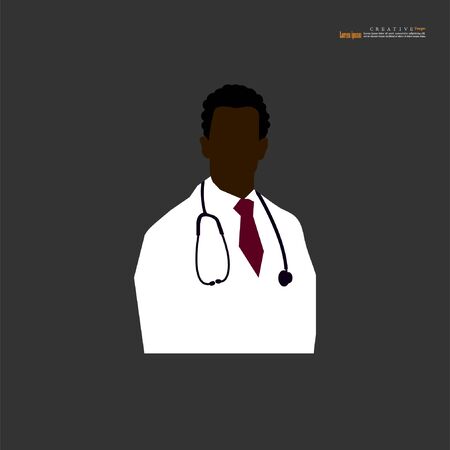Introduction to Rehabilitation Planning in the UK
Rehabilitation planning is a critical component within the broader framework of healthcare in the United Kingdom, encompassing a strategic approach to restoring health, function, and quality of life for individuals following illness, injury, or surgery. In the UK context, rehabilitation is not simply about physical recovery; it also addresses psychological, social, and vocational aspects, reflecting a holistic view of patient care. The significance of effective rehabilitation planning has grown as the population ages and the prevalence of long-term conditions rises. The unique structure of the UKs healthcare system offers two primary avenues for accessing rehabilitation services: through the National Health Service (NHS) and via private General Practitioners (GPs). The NHS provides universal access to care based on clinical need rather than ability to pay, which shapes both the scope and delivery of rehabilitation services. Conversely, private GPs offer an alternative pathway that can often provide greater flexibility and shorter waiting times for patients who choose or are able to pursue this option. Understanding how these two sectors operate individually and in tandem is essential for grasping the complexities and opportunities inherent in rehabilitation planning across the UK.
2. Structure and Responsibilities of NHS GPs in Rehabilitation
The National Health Service (NHS) General Practitioners (GPs) occupy a central position within the UK’s healthcare system, particularly when it comes to rehabilitation planning. Their responsibilities are structured around facilitating access to appropriate services, orchestrating multidisciplinary collaboration, and ensuring continuity of care throughout the patient’s rehabilitation journey.
Referral Processes and Patient Pathways
NHS GPs act as the first point of contact for most patients requiring rehabilitation. Their role involves initial assessment, diagnosis, and the formulation of a tailored care plan. When specialist input or therapies are needed, GPs initiate formal referral processes. These referrals may be directed towards NHS rehabilitation teams, community physiotherapists, occupational therapists, or other allied health professionals depending on clinical need and local service provision. The table below outlines typical referral pathways managed by NHS GPs:
| Stage | Action by GP | Outcome |
|---|---|---|
| Initial Assessment | Clinical evaluation & identification of rehabilitation needs | Personalised care plan development |
| Referral Initiation | Liaison with relevant NHS rehabilitation services | Patient is placed on appropriate care pathway |
| Ongoing Monitoring | Regular follow-up appointments & adjustments to care plan | Optimised patient recovery trajectory |
| Multidisciplinary Review | Coordination with specialists & therapists through case conferences or shared records | Integrated approach to patient care |
Multidisciplinary Collaboration in Rehabilitation Planning
NHS GPs are integral to the multidisciplinary team (MDT) model prevalent across the UK. This model promotes shared decision-making and seamless information exchange between healthcare professionals. GPs collaborate closely with physiotherapists, occupational therapists, speech and language therapists, social workers, and hospital consultants. Communication is facilitated via shared electronic health records, regular MDT meetings, and joint care reviews—ensuring that each patient receives holistic support tailored to their evolving needs.
Key Responsibilities of NHS GPs in MDT Settings
- Care Coordination: Ensuring that all aspects of the patient’s rehabilitation are harmonised and that transitions between services are smooth.
- Advocacy: Acting in the patient’s best interests by championing access to necessary resources or specialist interventions.
- Continuity: Maintaining oversight throughout the rehabilitation process to pre-empt complications or relapses.
- Patient Education: Supporting patients and families in understanding treatment options and self-management strategies.
Cultural Context: NHS Values and Community-Centred Care
The ethos underpinning NHS GP involvement in rehabilitation is firmly rooted in principles of equitable access, evidence-based practice, and public accountability. British patients expect NHS GPs to provide impartial guidance free from commercial bias, underscoring the importance of trust and transparency in rehabilitation planning.

3. Role of Private GPs in Rehabilitation Pathways
Private GPs occupy a distinctive position within the UKs healthcare landscape, particularly in the context of rehabilitation planning. Their involvement is often characterised by enhanced accessibility and greater flexibility compared to their NHS counterparts. This distinction arises chiefly from the differing funding structures and service delivery models that underpin private and public healthcare provision.
Service Accessibility
One of the primary advantages associated with private GPs is the increased ease of access they can offer to patients seeking rehabilitation services. In many cases, private practitioners are able to provide more rapid appointments, reduced waiting times for assessments, and swifter referrals to specialist rehabilitation services. This promptness can be crucial for individuals requiring timely intervention to optimise their recovery trajectories. Moreover, private GPs may have more flexibility in scheduling consultations outside conventional NHS hours, thus accommodating working professionals or those with complex personal commitments.
Flexibility in Care Delivery
The flexibility inherent in private general practice extends beyond appointment scheduling. Private GPs often have greater autonomy over care decisions and can tailor rehabilitation plans to suit individual patient preferences, lifestyle factors, and specific clinical needs. This personalised approach is facilitated by smaller patient lists and longer consultation times, allowing for a more comprehensive exploration of rehabilitation options—including physiotherapy, occupational therapy, psychological support, and bespoke multidisciplinary interventions.
Relationship to NHS Provisions
Despite these strengths, the role of private GPs does not exist in isolation from NHS systems. Many private practitioners maintain professional links with NHS specialists and community services, enabling them to coordinate care pathways across both sectors when necessary. This dual engagement can help bridge gaps for patients who may face delays within the NHS or who require services not immediately accessible through public channels. However, it is important to note that access to private GP-led rehabilitation remains contingent upon an individual’s ability to pay or hold appropriate insurance coverage—raising ongoing questions about equity and inclusivity within the broader UK healthcare context.
Summary
In summary, private GPs play a complementary yet critical role in rehabilitation planning within the UK. Their ability to offer accessible, flexible, and highly tailored care solutions enhances patient choice and responsiveness in a system otherwise challenged by capacity constraints. Nevertheless, their interaction with NHS pathways underscores the need for integrated care strategies that ensure all individuals—regardless of means—can benefit from high-quality rehabilitation support.
4. Collaborative Approaches and Patient Outcomes
The integration of NHS and private GPs in rehabilitation planning is a multifaceted aspect of the UK’s healthcare landscape. While each sector operates with distinct frameworks and resources, their collaborative or parallel involvement can significantly influence patient outcomes. This section evaluates the mechanisms of cooperation between NHS and private GPs, as well as the resulting impact on rehabilitation success rates and patient satisfaction.
Models of Collaboration
There are several ways in which NHS and private GPs may interact during a patient’s rehabilitation journey. These models range from fully collaborative approaches to more segregated, parallel pathways:
| Model | Description | Common Scenarios |
|---|---|---|
| Integrated Care Pathways | NHS and private GPs share medical records, coordinate treatment plans, and jointly monitor progress. | Complex cases requiring multidisciplinary input or expedited access to specific therapies. |
| Referral-Based Cooperation | NHS GPs refer patients to private specialists for assessments or interventions not readily available within the NHS. | When waiting times are long or when specialised expertise is needed quickly. |
| Parallel Management | Patients independently engage both NHS and private GPs, with little direct communication between providers. | Self-funded patients wishing to supplement NHS care with private services. |
The Impact on Rehabilitation Outcomes
The manner in which NHS and private GPs collaborate—or operate in isolation—can have notable effects on the quality of rehabilitation care. Evidence suggests that integrated approaches often lead to more holistic management, timely interventions, and improved continuity of care. Conversely, parallel models risk duplication of services, fragmented communication, and potential inconsistencies in treatment recommendations.
Patient-Centred Benefits of Collaboration
- Improved Access: Patients benefit from faster access to diagnostics and specialist therapies through coordinated referrals.
- Continuity of Care: Shared information systems reduce the likelihood of medical errors or omissions during transitions between providers.
- Bespoke Rehabilitation Plans: Joint input allows for more tailored plans addressing physical, psychological, and social needs.
Challenges in Collaborative Working
- Data Sharing Barriers: Differences in electronic health record systems can limit seamless communication.
- Resource Constraints: NHS time pressures may restrict opportunities for meaningful collaboration with private counterparts.
- Inequity Risks: Patients with means to access private care may experience enhanced outcomes compared to those reliant solely on NHS provision.
Summary Table: Comparative Impact on Outcomes
| Integrated Model | Parallel Model | |
|---|---|---|
| Treatment Timeliness | High (rapid access) | Variable (may depend on patient initiative) |
| Treatment Consistency | High (coordinated) | Low (potentially conflicting advice) |
| Patient Satisfaction | Generally higher due to seamless experience | Mixed; may be affected by confusion or gaps in care |
| Inequality Risk | Moderate (mitigated by collaboration) | Higher (dependent on ability to pay) |
The dynamic between NHS and private GPs is therefore pivotal in shaping rehabilitation trajectories. Where collaboration flourishes, patient experiences tend towards more positive outcomes; where it falters, risks of fragmentation and inequality increase. Effective policy-making should seek to address systemic barriers while promoting best-practice models of integrated rehabilitation planning across both sectors.
5. Challenges and Opportunities in Integration
The integration of NHS and private GP rehabilitation services presents a complex landscape shaped by longstanding systemic, policy, and financial factors. Understanding these challenges and identifying opportunities for cohesive collaboration is vital to improving patient outcomes and service efficiency across the UK.
Barriers to Integration
Several barriers impede seamless cooperation between NHS and private GP rehabilitation pathways. Policy divergence remains a significant issue; while NHS services are governed by national frameworks prioritising universal access and equity, private GPs often operate under distinct regulatory and clinical protocols. This can result in inconsistencies in care coordination, referral processes, and data sharing.
Funding structures also create friction. The NHS operates on publicly allocated budgets with strict resource limitations, whereas private services rely on out-of-pocket payments or insurance schemes. These differing funding models can complicate joint commissioning or pooled budget arrangements, potentially limiting patient access to integrated rehabilitation plans.
Moreover, there is the matter of patient choice. While patient autonomy is central within the NHS, the proliferation of private options sometimes leads to confusion regarding entitlements, service quality, and continuity of care.
Opportunities for Enhanced Collaboration
Despite these hurdles, there are notable opportunities to foster greater synergy. Shared care protocols, underpinned by robust information governance agreements, could enable smoother transitions between NHS and private sectors. By aligning assessment criteria and outcome measures, both sectors can ensure consistency in rehabilitation planning.
Furthermore, recent policy initiatives such as Integrated Care Systems (ICSs) encourage cross-sector working and pooled resources. These frameworks open doors for pilot projects that blend NHS oversight with private sector flexibility—potentially reducing waiting times and broadening therapeutic options for patients.
On the funding front, exploring hybrid models—such as social prescribing or voucher systems—may empower patients to select services most attuned to their needs while maintaining accountability and oversight.
The Role of Digital Health Solutions
Digital platforms offer a practical mechanism for bridging gaps between sectors. Shared electronic health records (EHRs), virtual MDT (multidisciplinary team) meetings, and tele-rehabilitation tools can facilitate communication and monitoring across provider boundaries, benefiting both clinicians and patients.
Conclusion: Striking a Balance
The integration of NHS and private GP rehabilitation services requires concerted effort to harmonise policies, funding streams, and patient engagement strategies. By embracing collaborative models and innovative solutions, there lies a tangible opportunity to deliver more responsive, personalised rehabilitation care for individuals throughout the UK.
6. Future Directions for Rehabilitation Planning in the UK
Insight into Emerging Trends
The landscape of rehabilitation planning within the UK is undergoing significant evolution, shaped by demographic shifts, technological advancements, and changing patient expectations. One prominent trend is the growing emphasis on personalised care pathways, which leverage data-driven insights to tailor rehabilitation plans to individual needs. Additionally, there is an increasing focus on early intervention strategies, supported by both NHS and private GPs, to prevent long-term disability and improve patient outcomes.
Innovative Practices in Collaborative Care
Recent innovations highlight the integration of multidisciplinary teams and digital health solutions. Virtual consultations and remote monitoring have become more prevalent, especially post-pandemic, enabling seamless collaboration between NHS and private GPs. These practices facilitate more timely interventions and support continuous patient engagement throughout the rehabilitation process. Moreover, shared electronic health records (EHRs) are fostering greater information exchange, minimising duplication of services, and enhancing care continuity.
Strategic Recommendations for Effective Collaboration
To fully realise the potential of collaborative rehabilitation planning, several strategic actions are recommended:
1. Strengthening Information Sharing Protocols
Establishing robust data-sharing agreements between NHS trusts and private GP practices can enhance communication and streamline referrals, ensuring that patients receive cohesive care regardless of provider.
2. Standardising Clinical Pathways
Developing unified clinical guidelines for rehabilitation will help align standards across sectors, reduce variability in service delivery, and promote best practices nationwide.
3. Investing in Joint Training Initiatives
Regular interdisciplinary training sessions involving both NHS and private practitioners can foster mutual understanding, build professional relationships, and support a culture of collaborative problem-solving.
Looking Ahead: A Unified Approach
As the boundaries between public and private healthcare continue to blur, a coordinated approach to rehabilitation planning is essential. By embracing emerging trends and innovative practices while committing to strategic collaboration, both NHS and private GPs can play pivotal roles in delivering high-quality, patient-centred rehabilitation services throughout the UK. The future lies in shared responsibility—ensuring every patient has access to effective rehabilitation support at every stage of their recovery journey.


